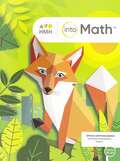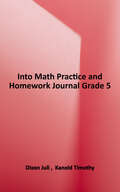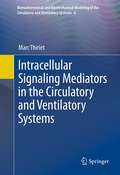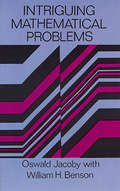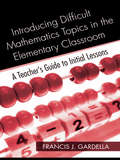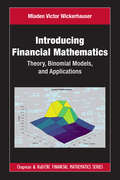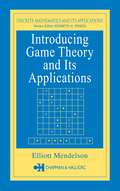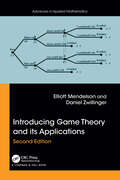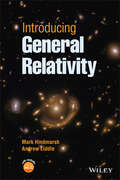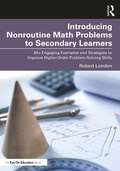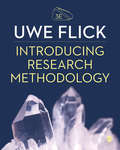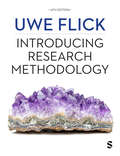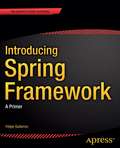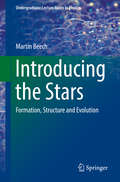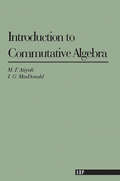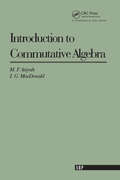- Table View
- List View
Into Math™ [Grade 5], Volume 2, Modules 10 – 20
by Timothy D. Kanold Edward B. Burger Juli K. DixonNIMAC-sourced textbook
Into Math™, Grade 4, Practice and Homework Journal (Into Math)
by Houghton Mifflin HarcourtNIMAC-sourced textbook
Into Math™, Grade 4: Getting Ready For High Stakes Assessment (Into Math)
by Houghton Mifflin HarcourtNIMAC-sourced textbook
Into Math™, Grade 5, Practice and Homework Journal
by Houghton Mifflin HarcourtNIMAC-sourced textbook
Into Math™, Grade 7 (Into Math)
by Timothy D. Kanold Edward B. Burger Juli K. DixonNIMAC-sourced textbook
Into Math™, Grade 8 (Into Math Ser.)
by Timothy D. Kanold Edward B. Burger Juli K. DixonNIMAC-sourced textbook
Into Math™, [Grade 4], Volume 1, Modules 1–9
by Timothy D. Kanold Edward B. Burger Juli K. DixonNIMAC-sourced textbook
Intracellular Signaling Mediators in the Circulatory and Ventilatory Systems
by Marc ThirietThe volumes in this authoritative series present a multidisciplinary approach to modeling and simulation of flows in the cardiovascular and ventilatory systems, especially multiscale modeling and coupled simulations. The cardiovascular and respiratory systems are tightly coupled, as their primary function is to supply oxygen to and remove carbon dioxide from the body's cells. Because physiological conduits have deformable and reactive walls, macroscopic flow behavior and prediction must be coupled to phenomenological models of nano- and microscopic events in a corrector scheme of regulated mechanisms when the vessel lumen caliber varies markedly. Therefore, investigation of flows of blood and air in physiological conduits requires an understanding of the biology, chemistry, and physics of these systems together with the mathematical tools to describe their functioning. Volume 4 is devoted to major sets of intracellular mediators that transmit signals upon stimulation of cell-surface receptors. Activation of signaling effectors triggers the release of substances stored in cellular organelles and/or gene transcription and protein synthesis. Complex stages of cell signaling can be studied using proper mathematical models, once the role of each component is carefully handled. Volume 4 also reviews various categories of cytosolic and/or nuclear mediators and illustrates some major signal transduction pathways, such as NFkappaB axis, oxygen sensing, and mechanotransduction.
Intriguing Mathematical Problems (Dover Books on Mathematics)
by Oswald Jacoby William H. BensonAmusing and informative in its approach to solving mathematical bafflers, this treasury of theories, games, puzzles and oddities of all kinds, compiled by one of the world's best card players (Jacoby) and an expert in mathematical recreations (Benson) will delight and fascinate math enthusiasts.Although primarily intended to entertain, the wide variety of puzzles ― ranging from facile curiosities to very difficult intellectual exercises ― will challenge you to keep your mind going full steam. Each of the book's five sections ― "Fun with Numbers," "Fun with Letters," "The Odds: Explorations in Probability," "Where Inference and Reasoning Reign" and "The Answers Are Whole Numbers" ― is made up of approximately 30 problems, with solutions grouped at the end of each section. Math buffs will love testing their puzzle-solving skills on such challenging brainteasers as The Enterprising Snail, Mrs. Crabbe and the Bacon, The Fly and the Bicycles, The Lovesick Cockroaches, The Three Prisoners, Girls Should Live in Brooklyn, Who Was Executed?, Creaker vs. Roadhog, The Crossed Ladders, The Ancient Order of the Greens, and many more.Few of these problems require any advanced mathematical knowledge or prowess. You'll find that simply keeping your wits about you and your logical skills honed are all you need to enjoy a delightful and thought-provoking adventure in recreational mathematics. Foreword. 10 illustrations. 14 tables.
Intro Stats
by Richard D. De Veaux Paul F. Velleman David E. BockIntroduction to Statistics accessible for students pursuing careers in a variety of disciplines.
Introducing Difficult Mathematics Topics in the Elementary Classroom: A Teacher’s Guide to Initial Lessons
by Francis J. GardellaThis exciting text for the pre-service elementary teacher provides hands on mathematics lessons they can use to introduce mathematical concepts and skills that students find particularly challenging. Each chapter is divided into four sections: The Activity employs an engaging thought experiment to help the reader "visit a classroom" to understand how the lesson used to introduce the concept or skill would materialize in the class. The Mathematics provides the necessary mathematical background used in the lesson to make the actual teaching/learning situation comfortable for both the teachers and the learner. The Plan provides the reader with an actual lesson plan to engage the Activity in the classroom setting. Putting It All Together pulls the previous sections together with a summary of the chapter as well as further information for making the lesson successful. By providing models of what excellent lessons on a given topic look like, knowledge of the mathematics involved, and a concrete lesson plan structure this much-needed resource is the definitive mathematics planning vehicle that every teacher will want before they set foot in their own elementary classroom.
Introducing Financial Mathematics: Theory, Binomial Models, and Applications (Chapman and Hall/CRC Financial Mathematics Series)
by Mladen Victor WickerhauserIntroducing Financial Mathematics: Theory, Binomial Models, and Applications seeks to replace existing books with a rigorous stand-alone text that covers fewer examples in greater detail with more proofs. The book uses the fundamental theorem of asset pricing as an introduction to linear algebra and convex analysis. It also providesexample computer programs, mainly Octave/MATLAB functions but also spreadsheets and Macsyma scripts, with which students may experiment on real data.The text's unique coverage is in its contemporary combination ofdiscrete and continuous models to compute implied volatility and fit models to market data. The goal is to bridge the large gaps among nonmathematical finance texts, purely theoretical economics texts, and specific software-focused engineering texts.
Introducing Game Theory and its Applications (Advances in Applied Mathematics)
by Elliott MendelsonThe mathematical study of games is an intriguing endeavor with implications and applications that reach far beyond tic-tac-toe, chess, and poker to economics, business, and even biology and politics. Most texts on the subject, however, are written at the graduate level for those with strong mathematics, economics, or business backgrounds.In
Introducing Game Theory and its Applications (ISSN)
by Elliott Mendelson Daniel ZwillingerThis classic text, originally from the noted logician Elliot Mendelson, is intended to be an easy-to-read introduction to the basic ideas and techniques of game theory. It can be used as a class textbook or for self-study. Introducing Game Theory and its Applications, Second Edition presents an easy-to-read introduction to the basic ideas and techniques of game theory. After a brief introduction, the authors begin with a chapter devoted to combinatorial games--a topic neglected or treated minimally in most other texts. The focus then shifts to two-person zero-sum games and their solutions.Here the authors present the simplex method based on linear programming for solving these games and develop within this presentation the required background. The final chapter presents some of the fundamental ideas and tools of non-zero-sum games and games with more than two players, including an introduction to cooperative game theory.The book is suitable for a first undergraduate course in game theory, or a graduate course for students with limited previous exposure. It is useful for students who need to learn some game theory for a related subject (e.g., microeconomics) and have a limited mathematical background. It also prepares its readers for more advanced study of game theory's applications in economics, business, and the physical, biological, and social sciences.The authors hope this book breeds curiosity about the subject as its design is meant to to satisfy the readers. The book will prepare readers for deeper study of game theory applications in many fields of study.
Introducing General Relativity
by Andrew Liddle Mark HindmarshIntroducing General Relativity An accessible and engaging introduction to general relativity for undergraduates In Introducing General Relativity, the authors deliver a structured introduction to the core concepts and applications of General Relativity. The book leads readers from the basic ideas of relativity—including the Equivalence Principle and curved space-time—to more advanced topics, like Solar System tests and gravitational wave detection. Each chapter contains practice problems designed to engage undergraduate students of mechanics, electrodynamics, and special relativity. A wide range of classical and modern topics are covered in detail, from exploring observational successes and astrophysical implications to explaining many popular principles, like space-time, redshift, black holes, gravitational waves and cosmology. Advanced topic sections introduce the reader to more detailed mathematical approaches and complex ideas, and prepare them for the exploration of more specialized and sophisticated texts. Introducing General Relativity also offers: Structured outlines to the concepts of General Relativity and a wide variety of its applications Comprehensive explorations of foundational ideas in General Relativity, including space-time curvature and tensor calculus Practical discussions of classical and modern topics in relativity, from space-time to redshift, gravity, black holes, and gravitational waves Optional, in-depth sections covering the mathematical approaches to more advanced ideas Perfect for undergraduate physics students who have studied mechanics, dynamics, and Special Relativity, Introducing General Relativity is an essential resource for those seeking an intermediate level discussion of General Relativity placed between the more qualitative books and graduate-level textbooks.
Introducing Nonroutine Math Problems to Secondary Learners: 60+ Engaging Examples and Strategies to Improve Higher-Order Problem-Solving Skills
by Robert LondonOffering secondary math educators an innovative holistic and process-orientated approach for implementing nonroutine problems into their curriculum, this book defines and establishes practical strategies to develop students’ problem-solving skills. The text focuses on the process skills necessary to solve nonroutine problems in mathematics and other subjects, with the goal of making students better problem-solvers both in and outside of the classroom. Chapters present and define a curriculum of over 60 nonroutine problems in mathematics and other content areas, and explore the pedagogy to implement this type of curriculum consistent with the NCTM Standards and Principles to Action. Four different models of implementation are discussed, alongside a structured approach through seven difficulty levels (with examples), to ensure that every student, independent of their mastery of mathematics content, can improve their ability to solve nonroutine problems. It emphasizes to students how to transfer their problem-solving skills to other real-world areas, including increasing ecological awareness, appreciating diversity and addressing significant and meaningful problems in their life, school and community. The curriculum introduced in this book can be included as a component of a traditional four-year academic high school curriculum aligned with the Common Core Mathematical Practices, or as part of a one-year isolated required or elective mathematics course. Based on extensive field-testing this approach has been effective in both traditional mathematics courses and math electives such as a course in Problem-Solving. This book provides the necessary guidance to allow each mathematics teacher to effectively integrate the approach in their classrooms. This book is ideal for secondary mathematics teachers of all levels, as well as teachers of mathematics electives.
Introducing Research Methodology: Thinking Your Way Through Your Research Project
by Uwe FlickOffering an encyclopedic introduction to research, this book shows you how to think about every stage of their project and equips you with the tools you need to understand different research processes. Packed with examples showing the diversity of research, this third edition provides hands-on guidance to help: Develop key academic skills like critical thinking, effective writing and building an argument Confidently interpret findings, assess arguments and understand the wider impact of their research Understand the challenges and opportunities involved in working with new types of data like social media and online data Supported by a dynamic new website with downloadable templates, case studies, dos and don’ts videos and more, this practical book prepares you for not just getting to grips with methodological concepts, but being ready to apply them.
Introducing Research Methodology: Thinking Your Way Through Your Research Project
by Uwe FlickOffering an encyclopedic introduction to research, this book shows you how to think about every stage of their project and equips you with the tools you need to understand different research processes. Packed with examples showing the diversity of research, this third edition provides hands-on guidance to help: Develop key academic skills like critical thinking, effective writing and building an argument Confidently interpret findings, assess arguments and understand the wider impact of their research Understand the challenges and opportunities involved in working with new types of data like social media and online data Supported by a dynamic new website with downloadable templates, case studies, dos and don’ts videos and more, this practical book prepares you for not just getting to grips with methodological concepts, but being ready to apply them.
Introducing Research Methodology: Thinking Your Way Through Your Research Project
by Uwe FlickNew to research? This book helps you understand, think about and interpret each stage of the research process before you dive in. The holistic coverage helps you ′think through′ each step, from formulating questions and selecting methods to collecting data and analyzing results. With new content on the ethics of digital research, online interviews and data protection, you will also find: 10 new Student Research Spotlights that demonstrate how you can foster a reflexive mindset; A strong emphasis on social justice, including principles for culturally-responsive research and methodologies that challenge colonial perspectives; 34 case studies of real-world research that apply theory to global contexts, from Portugal to Germany to Canada. This new edition is essential for any undergraduate or postgraduate student looking to conduct social research with confidence and capability.
Introducing Research Methodology: Thinking Your Way Through Your Research Project
by Uwe FlickNew to research? This book helps you understand, think about and interpret each stage of the research process before you dive in. The holistic coverage helps you ′think through′ each step, from formulating questions and selecting methods to collecting data and analyzing results. With new content on the ethics of digital research, online interviews and data protection, you will also find: 10 new Student Research Spotlights that demonstrate how you can foster a reflexive mindset; A strong emphasis on social justice, including principles for culturally-responsive research and methodologies that challenge colonial perspectives; 34 case studies of real-world research that apply theory to global contexts, from Portugal to Germany to Canada. This new edition is essential for any undergraduate or postgraduate student looking to conduct social research with confidence and capability.
Introducing Spring Framework
by Felipe GutierrezIntroducing Spring Framework is your hands-on guide to learning to build applications using the Spring Framework. The book uses a simple My Documents application that you will develop incrementally over the course of the book and covers: - How to programmatically configure the Spring container and beans- How to use annotations for dependency injection- How to use collections and custom types- How to customize and configure bean properties and bean lifecycle interfaces- How to handle metadata using XML, annotations, and the Groovy bean reader- How to use the new Spring Boot and Spring XDAfter reading this book, you will have all you need to start using the Spring Framework effectively.
Introducing the Stars: Formation, Structure and Evolution (Undergraduate Lecture Notes in Physics)
by Martin BeechThis textbook introduces the reader to the basic concepts and equations that describe stellar structure. Various approximation techniques are used to solve equations, and an intuitive rather than rigorous approach is employed to interpret the properties of the stars. The book provides step-by-step instructions, helpful exercises and relevant historical lessons to familiarize students with key concepts and mathematical theories.Based upon a series of one-semester (12 weeks) elective undergraduate courses offered at the University of Regina, this book is intended for students who are interested in seeing how basic calculus and introductory physics can be applied to the understanding of the stars from their formation to their death. The text provides an intermediate stepping stone between lower-level undergraduate classes and more specialized postgraduate texts on the subject of stellar structure.
Introduction To Commutative Algebra
by Michael Atiyah I. G. MacdonaldThis book grew out of a course of lectures given to third year undergraduates at Oxford University and it has the modest aim of producing a rapid introduction to the subject. It is designed to be read by students who have had a first elementary course in general algebra. On the other hand, it is not intended as a substitute for the more voluminous tracts such as Zariski-Samuel or Bourbaki. We have concentrated on certain central topics, and large areas, such as field theory, are not touched. In content we cover rather more ground than Northcott and our treatment is substantially different in that, following the modern trend, we put more emphasis on modules and localization.
Introduction To Commutative Algebra
by Michael F. Atiyah I.G. MacDonaldFirst Published in 2018. This book grew out of a course of lectures given to third year undergraduates at Oxford University and it has the modest aim of producing a rapid introduction to the subject. It is designed to be read by students who have had a first elementary course in general algebra. On the other hand, it is not intended as a substitute for the more voluminous tracts such as Zariski-Samuel or Bourbaki. We have concentrated on certain central topics, and large areas, such as field theory, are not touched. In content we cover rather more ground than Northcott and our treatment is substantially different in that, following the modern trend, we put more emphasis on modules and localization.
